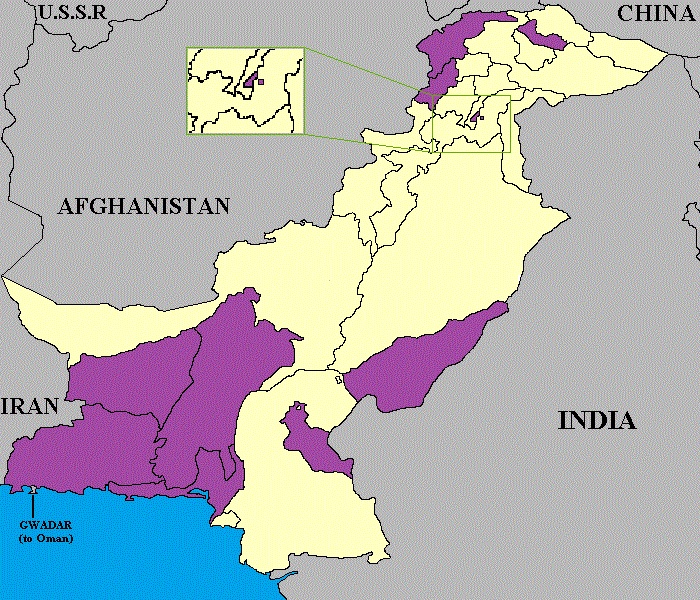|
Allama Iqbal Town, Muzaffargarh
Allama Iqbal Town is a housing complex in Pakistan built for victims of severe floods in July 2010. It is situated on the N-70 National Highway near Muzaffargarh. It contains 296 houses, a masjid, a school, a town hall, a commercial market and six plots for recreational parks. History After the flood that killed nearly 2,000 people and affected at least 20 million Pakistanis in 2010, a Turkish Non-governmental organization A non-governmental organization (NGO) is an independent, typically nonprofit organization that operates outside government control, though it may get a significant percentage of its funding from government or corporate sources. NGOs often focus ... Kimse Yok, built a small housing complex on a 110-decare area near Muzaffargarh at a cost of Rs 550 million. Constructed in 18 months, the village was inaugurated on September 14, 2013. References {{reflist Populated places in Muzaffargarh District ... [...More Info...] [...Related Items...] OR: [Wikipedia] [Google] [Baidu] |
Pakistan
Pakistan, officially the Islamic Republic of Pakistan, is a country in South Asia. It is the List of countries and dependencies by population, fifth-most populous country, with a population of over 241.5 million, having the Islam by country#Countries, second-largest Muslim population as of 2023. Islamabad is the nation's capital, while Karachi is List of cities in Pakistan by population, its largest city and financial centre. Pakistan is the List of countries and dependencies by area, 33rd-largest country by area. Bounded by the Arabian Sea on the south, the Gulf of Oman on the southwest, and the Sir Creek on the southeast, it shares land borders with India to the east; Afghanistan to the west; Iran to the southwest; and China to the northeast. It shares a maritime border with Oman in the Gulf of Oman, and is separated from Tajikistan in the northwest by Afghanistan's narrow Wakhan Corridor. Pakistan is the site of History of Pakistan, several ancient cultures, including the ... [...More Info...] [...Related Items...] OR: [Wikipedia] [Google] [Baidu] |
Subdivisions Of Pakistan
The administrative units of Pakistan comprise four provinces, one federal territory, and two territorial dispute, disputed territories: the provinces of Punjab, Pakistan, Punjab, Sindh, Khyber Pakhtunkhwa, and Balochistan, Pakistan, Balochistan; the Islamabad Capital Territory; and the administrative territories of Azad Kashmir, Azad Jammu and Kashmir and Gilgit-Baltistan, Gilgit–Baltistan. As part of the Kashmir conflict with neighbouring India, Pakistan has also claimed sovereignty over the Indian-controlled territories of Jammu and Kashmir (union territory), Jammu and Kashmir and Ladakh since the Indo-Pakistani War of 1947–1948, First Kashmir War of 1947–1948. It also has a territorial dispute with India over Junagadh State, Junagadh, but has never exercised administrative authority over either regions. All of Pakistan's provinces and territories are subdivided into divisions of Pakistan, divisions, which are further subdivided into districts of Pakistan, districts, ... [...More Info...] [...Related Items...] OR: [Wikipedia] [Google] [Baidu] |
Punjab (Pakistan)
Punjab (, ) is a province of Pakistan. With a population of over 127 million, it is the most populous province in Pakistan and the second most populous subnational polity in the world. Located in the central-eastern region of the country, it has the largest economy, contributing the most to national GDP in Pakistan. Lahore is the capital and largest city of the province. Other major cities include Faisalabad, Rawalpindi, Gujranwala and Multan. It is bordered by the Pakistani provinces of Khyber Pakhtunkhwa to the north-west, Balochistan to the south-west and Sindh to the south, as well as Islamabad Capital Territory to the north-west and Azad Kashmir to the north. It shares an international border with the Indian states of Rajasthan and Punjab to the east and Indian-administered Kashmir to the north-east. Punjab is the most fertile province of the country as the Indus River and its four major tributaries Ravi, Jhelum, Chenab and Sutlej flow through it. The provin ... [...More Info...] [...Related Items...] OR: [Wikipedia] [Google] [Baidu] |
Districts Of Pakistan
The districts of Pakistan () are the third-level administrative divisions of Pakistan, below administrative units of Pakistan, provinces and divisions of Pakistan, divisions, but forming the first-tier of local government in Pakistan, local government. In total, there are 169 districts in Pakistan, including 10 districts in list of districts in Azad Kashmir, Azad Kashmir and 14 districts in list of districts in Gilgit-Baltistan, Gilgit-Baltistan., excluding Islamabad Capital Territory. These districts are further divided into ''list of tehsils in Pakistan, tehsils and union councils of Pakistan, union councils''. History In 1947, when Pakistan gained independence there were 124 districts. In 1969, 2 new districts (Tangail and Patuakhali) in East Pakistan were formed, bringing the total to 126. With the Independence of Bangladesh, Pakistan lost 20 of its districts and so there were 106 districts. In 2001, the number was reduced to 102 by the merger of the 5 districts of Karach ... [...More Info...] [...Related Items...] OR: [Wikipedia] [Google] [Baidu] |
Muzaffargarh District
Muzaffargarh District () is a district of the Punjab province of Pakistan. Its capital is Muzaffargarh city. It lies on the bank of the Chenab River. History Muzaffargarh () was founded by the Saddozai Nawab of Multan, Nawab Muzaffar Khan, in 1794. Muzaffargarh district was annexed by the British from its former Sikh rulers after the Second Anglo-Sikh War of 1848–1849. In 1861 it became the separate Muzaffargarh District. After the independence of Pakistan in 1947, the minority Hindus and Sikhs migrated to India while the Muslim refugees from India settled in the Muzaffargarh District. Muslim refugees from East Punjab, Haryana, Jammu started arriving and crossed the border into Pakistan; many were given land in Muzaffargarh District to settle. Administration The district is administratively divided into the following three tehsils (subdivisions), which contain a total of 93 Union Councils: Demographics Population As of the 2023 census, present Muzaffargarh ... [...More Info...] [...Related Items...] OR: [Wikipedia] [Google] [Baidu] |
2010 Pakistan Floods
The floods in Pakistan began in late July 2010, resulting from heavy monsoon rains in the Khyber Pakhtunkhwa, Sindh, Punjab (Pakistani province), Punjab and, Balochistan, Pakistan, Balochistan regions of Pakistan, which affected the Indus River basin. Approximately one-fifth of Pakistan's total land area was affected by floods, with the Khyber Pakhtunkhwa province facing the brunt of the damage and casualties (above 90% of all the deaths occurred in the province). Nationwide, there were 1,985 deaths. According to Pakistani government data, the floods directly affected about 20 million people, mostly by destruction of property, livelihood and infrastructure. UN Secretary-General Ban Ki-moon had initially asked for US$460 million (€420 million) for emergency relief, noting that the flood was the worst disaster he had ever seen. Only 20% of the relief funds requested had been received on 15 August 2010. The U.N. had been concerned that aid was not arriving fast enough, and ... [...More Info...] [...Related Items...] OR: [Wikipedia] [Google] [Baidu] |
N-70 National Highway
The National Highway 70 (), or the N-70, is one of the National Highways of Pakistan. It runs from the city of Multan in Punjab to the town of Qilla Saifullah via Dera Ghazi Khan, and Loralai in Balochistan province. Its total length is divided into in Balochistan and the remaining in the Punjab. It is maintained and operated by Pakistan's National Highway Authority. The N-70 runs in between the mighty Sulaiman Mountains, lush green farmlands of Multan and Dera Ghazi Khan's districts, and you may also experience the fascinating sceneries of MusaKhel, Makhter region, and empty and beautiful areas from Loralai to Qilla Saifullah. Route The highway starts right after the junction of N-5 in the suburbs of Multan and runs towards Muzaffargarh after crossing river Chenab and then river Indus to enter D.G Khan. After D.G Khan it starts ascending on Sulemaan range and through Girdu Pass and Fort Munro it enters in Balochistan. The first town in Balochistan province is Rak ... [...More Info...] [...Related Items...] OR: [Wikipedia] [Google] [Baidu] |
Muzaffargarh
Muzaffargarh is a city in the province of Punjab, Pakistan. Located on the bank of the Chenab River, it is the capital of the eponymous district. It is the 39th most populous city of Pakistan. History The Muzaffargarh region was an agricultural and forested area during the Indus Valley civilization. Then came the Vedic period, which was characterized by the introduction of Indo-Aryan culture into the Punjab province. Over time, several other civilizations came to power in the ancient town and surrounding district: the Kambojas, the Daradas, the Kekayas, the Madras, the Pauravas, the Yaudheyas, the Malavas and the Kurus. After the fall of the Achaemenid Empire in 331 BCE, Alexander the Great marched into the present-day Punjab province with an army of 50,000 men. The Muzaffargarh region was, during different time periods, also ruled by the Maurya Empire, the Indo-Greek kingdom, the Kushan Empire, the Gupta Empire, the White Huns, the Kushano-Hephthalites, and the Turk and ... [...More Info...] [...Related Items...] OR: [Wikipedia] [Google] [Baidu] |
Masjid
A mosque ( ), also called a masjid ( ), is a place of worship for Muslims. The term usually refers to a covered building, but can be any place where Islamic prayers are performed; such as an outdoor courtyard. Originally, mosques were simple places of prayer for the early Muslims, and may have been open spaces rather than elaborate buildings. In the first stage of Islamic architecture (650–750 CE), early mosques comprised open and closed covered spaces enclosed by walls, often with minarets, from which the Islamic call to prayer was issued on a daily basis. It is typical of mosque buildings to have a special ornamental niche (a ''mihrab'') set into the wall in the direction of the city of Mecca (the ''qibla''), which Muslims must face during prayer, as well as a facility for ritual cleansing (''wudu''). The pulpit (''minbar''), from which public sermons (''khutbah'') are delivered on the event of Friday prayer, was, in earlier times, characteristic of the central city mosque, ... [...More Info...] [...Related Items...] OR: [Wikipedia] [Google] [Baidu] |
Non-governmental Organization
A non-governmental organization (NGO) is an independent, typically nonprofit organization that operates outside government control, though it may get a significant percentage of its funding from government or corporate sources. NGOs often focus on humanitarian or social issues but can also include clubs and associations offering services to members. Some NGOs, like the World Economic Forum, may also act as lobby groups for corporations. Unlike international organizations (IOs), which directly interact with sovereign states and governments, NGOs are independent from them. The term as it is used today was first introduced in Article 71 of the UN Charter, Article 71 of the newly formed United Nations Charter in 1945. While there is no fixed or formal definition for what NGOs are, they are generally defined as nonprofit entities that are independent of governmental influence—although they may receive government funding. According to the United Nations Department of Global Communic ... [...More Info...] [...Related Items...] OR: [Wikipedia] [Google] [Baidu] |
Rupee
Rupee (, ) is the common name for the currency, currencies of Indian rupee, India, Mauritian rupee, Mauritius, Nepalese rupee, Nepal, Pakistani rupee, Pakistan, Seychellois rupee, Seychelles, and Sri Lankan rupee, Sri Lanka, and of former currencies of Afghan rupee, Afghanistan, Bahrain, Kuwait, Oman, the United Arab Emirates (as the Gulf rupee), East African rupee, British East Africa, Burmese rupee, Burma, German East African rupie, German East Africa (as German East African rupie, Rupie/Rupien), and Historical money of Tibet, Tibet. In Indonesia and the Maldives, the unit of currency is known as ''rupiah'' and ''rufiyaa'' respectively, cognates of the word rupee. The Indian rupee and Pakistani rupee are subdivided into one hundred paisa, paise (singular ''paisa'') or pice. The Nepalese rupee (रू) subdivides into one hundred paisa (singular and plural) or four sukaas. The Mauritian rupee, Mauritian, Seychellois rupee, Seychellois, and Sri Lankan rupees subdivide into 10 ... [...More Info...] [...Related Items...] OR: [Wikipedia] [Google] [Baidu] |




